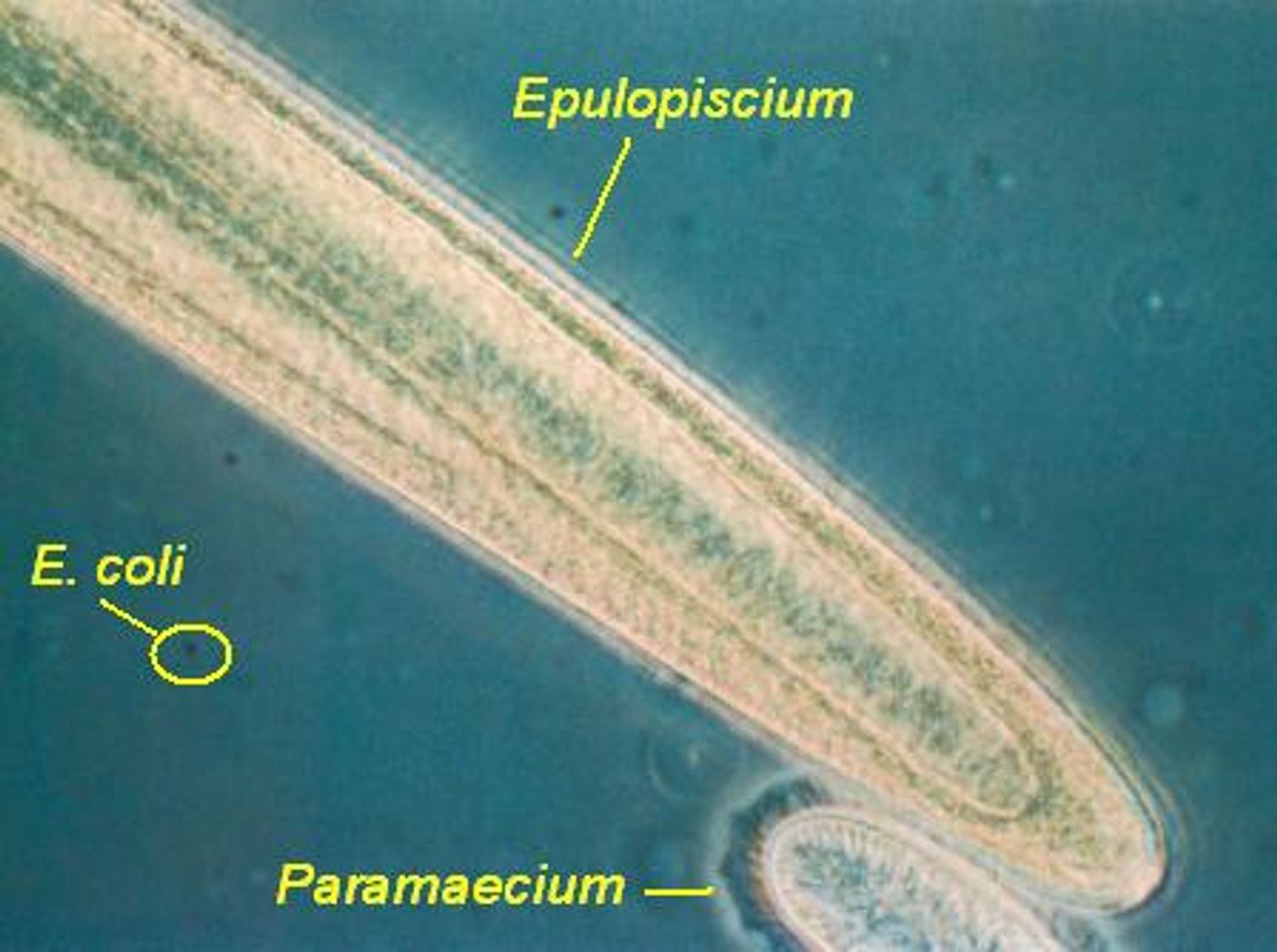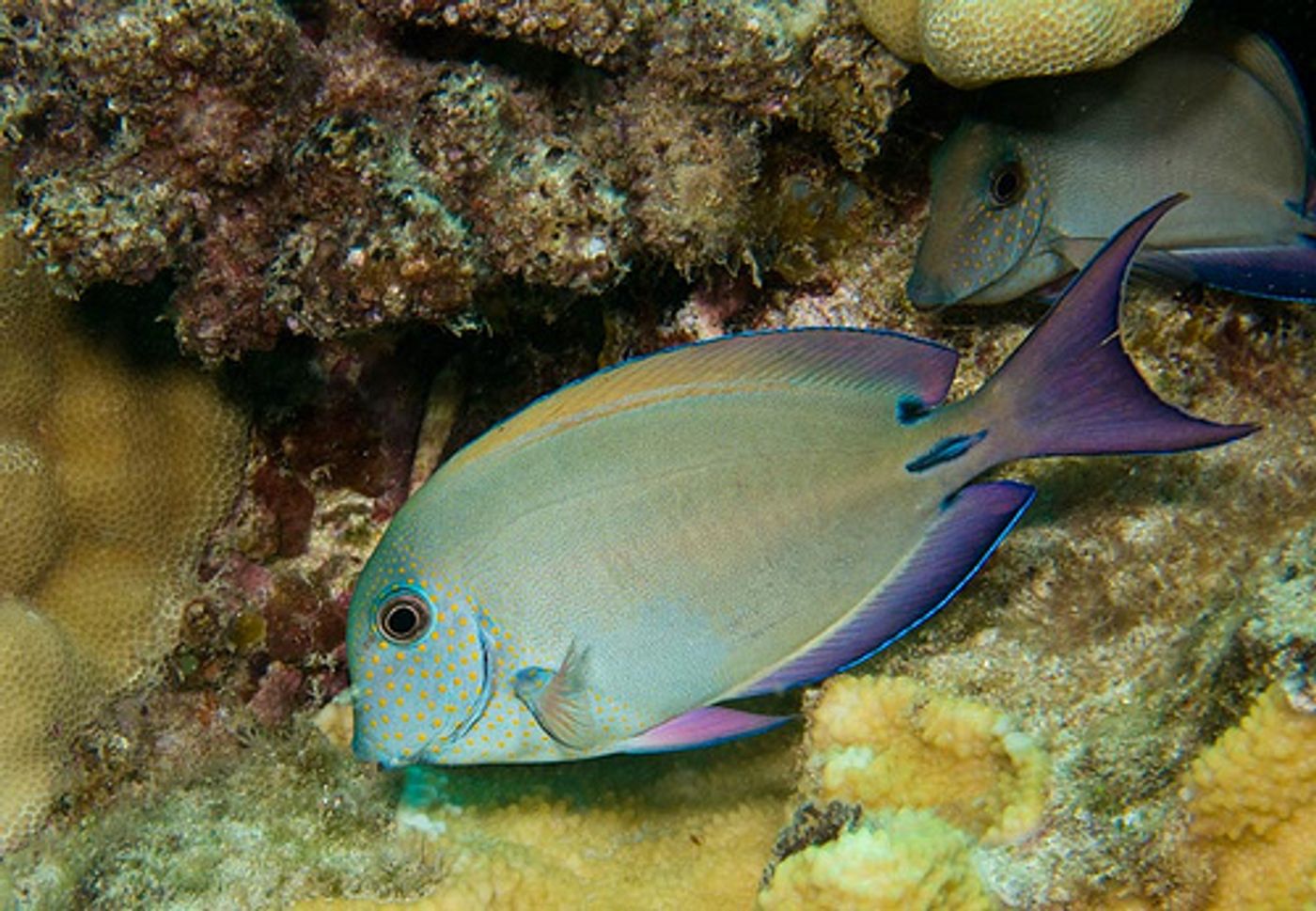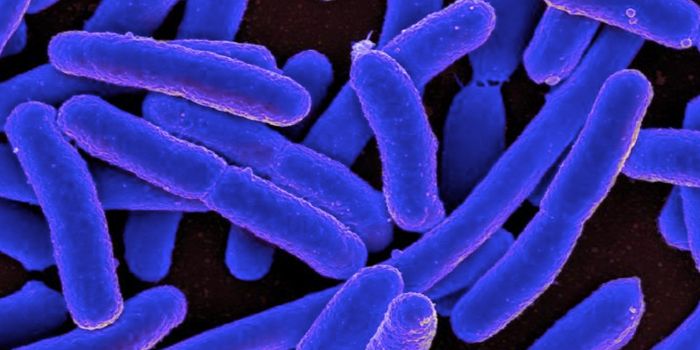What’s the first thing you think of when you see the word “bacteria”? My first thought is, “those things are tiny!”. (Ok, most of you probably think “disease!”, but bear with me.) Not all bacteria are tiny, some are actually visible to the naked eye!
Species of Epulopiscium are among the largest bacteria ever discovered. The cells grow to 0.6 mm in length - about the size of a
grain of sand - and their volume is about 2,000 times greater than average bacteria. (Only
Thiomargarita namibiensis is larger, at nearly 0.75 mm in diameter.)
Epulopiscium’s size is probably due to the fact that it carries around many, many copies of its genome, but the jury is still out on this.
The name Epulopiscium means “guest at a banquet of fish”. They are so-named because these bacteria are intestinal symbionts of surgeonfish. Since
Epulopiscium cells are so large and have a unique way of reproducing (more on this later), they were classified initially as protists. However, 16S rRNA analysis revealed that
Epulopiscium is rather closely-related to species in the Gram-positive genus
Clostridium.
Remarkably, all work done on Epulopiscium uses cells taken directly from surgeonfish because this species has yet to be cultured outside of its host. Although Epulopiscium is tough to study, we know quite a bit about it.
For one, Epulopiscium produces a “cortex” made up of vesicles and tubules. Since the cells are so large, these structures may be used to shuttle waste out of the cells. Alternately, they may be used to transport substances throughout the cell.
Epulopiscium also regulates the pH within the surgeonfish gut. This process may regulate metabolism in the gut, but this is not clear.
Last, but not least, Epulopiscium has a very odd way of reproducing. Its life cycle is linked to the daily activities of the surgeonfish. In the morning, the bacterial cells contain spherical nucleoids (these contain DNA) at each cell pole. As the day progresses, the cells increase in length, and the nucleoids replicate inside the parent cell, forming daughter cells. At this point, the daughter cells are released, killing the parent.
Sources: MicrobeWiki,
Journal of Bacteriology,
Cornell University, Wikipedia,
Missouri S&T











